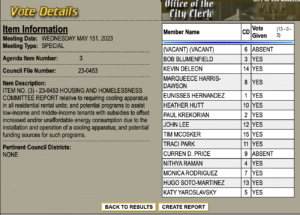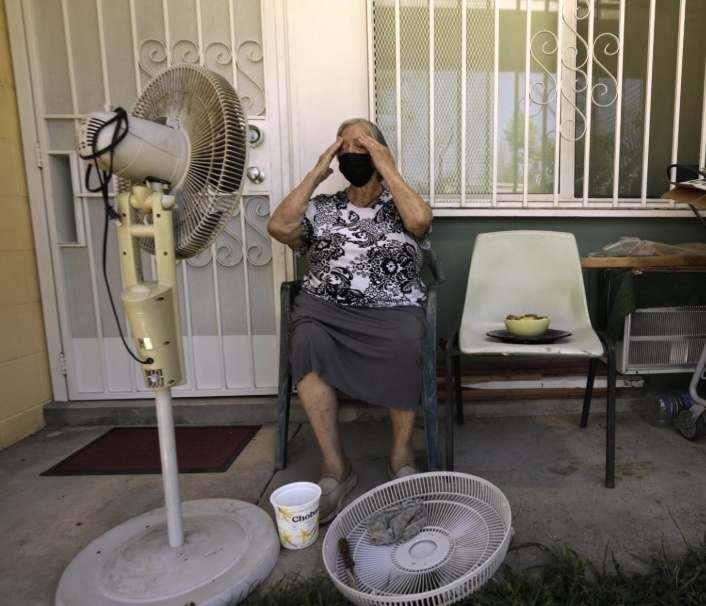As climate change fuels more frequent and deadly heatwaves across Southern California, Los Angeles County has adopted a landmark indoor cooling mandate for rental housing. The Board of Supervisors voted unanimously this week to require landlords in unincorporated parts of the county to maintain indoor temperatures below 82 degrees Fahrenheit, marking a major step in recognizing extreme heat as a housing and public health emergency.
The new rule, set to be fully enforced in 2027, offers immediate protections for renters who install their own cooling appliances and gives landlords a two-year grace period to bring their units into compliance. In an effort to ease the financial burden, small landlords (those with ten or fewer units) will be allowed to cool just one habitable room per unit until 2032, and the county plans to identify funding sources to assist with retrofits.
The policy comes after years of warnings from scientists and public health officials that heat is the deadliest weather-related threat in California. A 2022 heatwave alone killed over 200 people in Los Angeles County, and experts agree that conditions will only worsen without meaningful adaptation.
While the new mandate currently applies only to unincorporated areas, incorporated cities have the option to adopt the same standard. Meanwhile, the City of Los Angeles has been considering its own version of a cooling requirement, but has not yet implemented one.
 In May 2023, the Los Angeles City Council voted unanimously to begin the process of requiring mandatory air conditioning in all rental units citywide. The motion called on the city attorney and the housing department to explore code amendments and funding options to support implementation. Councilmembers cited the rise in emergency room visits during heatwaves as a key reason to act, but the proposal has not yet advanced to a final vote or ordinance.
In May 2023, the Los Angeles City Council voted unanimously to begin the process of requiring mandatory air conditioning in all rental units citywide. The motion called on the city attorney and the housing department to explore code amendments and funding options to support implementation. Councilmembers cited the rise in emergency room visits during heatwaves as a key reason to act, but the proposal has not yet advanced to a final vote or ordinance.
Landlord groups in the city, much like those in the county, voiced strong concerns about the cost of compliance. Some warned they might have to sell their properties if required to install cooling appliances. Others have pushed for alternative approaches, such as expanding access to public cooling centers with free transportation for tenants.
Despite these objections, both city and county leaders appear to recognize that existing housing infrastructure is not equipped to handle the intensifying heat. The California Department of Housing and Community Development has recommended an indoor temperature cap of 82 degrees for rental housing, and several cities around the country have adopted similar thresholds. Palm Springs limits indoor temperatures to 80 degrees, while Dallas allows up to 85 degrees.
Environmental and energy officials have sought to reassure policymakers that increased electricity demand from additional cooling will not overwhelm the region’s grid. In unincorporated Los Angeles County, utility providers say all electricity will be carbon-free by the time the new ordinance takes effect, and that peak demand levels remain within manageable limits.
With the county already taking action, attention is now squarely back on the City of Los Angeles. The new law should light a fire under city leaders to move beyond “exploring” code amendments, and pass a strong cooling mandate that protects renters from extreme heat.

